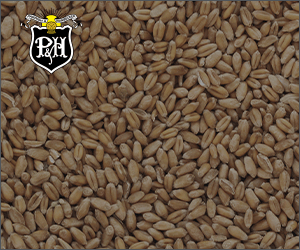Sulphur: more than just a secondary nutrient?
RESEARCH SHOWS BENEFITS OF SULPHUR
sulphur has been getting a lot of attention this year — some are even calling it the next ‘it’ nutrient. Preliminary in-field research trials are showing promising results with as much as a seven bushel increase in yield per acre in wheat and an eight percent increase overall in canola yields.
It’s not new, in fact the Ontario Ministry of Agriculture, Food and Rural Affairs (OMAFRA) soil fertility specialist, Bonnie Ball says sulphur application used to be standard practice in Ontario and still is in Western Canada. The difference now is the reduction in acid rain. Sulphur is generally provided in adequate amounts for crop growth in acid rain, livestock manure and organic matter breakdown. Research has indicated that sulphur atmospheric deposition, or acid rain, has declined from 27 kilograms per hectare (kg/ha) in the mid-1980s to about 20 kg/ha in 2001 and today the rate is estimated at between 8-13 kg/ha in south western Ontario. That means farmers can’t rely on the atmosphere to replenish sulphur in the soil. And that’s not a bad thing, a reduction in acid rain and sulphur deposition indicates a reduction in overall pollution.
a transient nutrient
Traditionally referred to as a secondary nutrient, sulphur moves through the soil like nitrates and is hard to identify. “It’s here today and gone tomorrow,” says Ball who explains that the best way to currently test a field for sulphur concentration is a plant tissue test. Sulphur deficiencies are most obvious in wet conditions and on lighter soils. Combine that with the slower release of the nutrient from organic matter due to cool, wet conditions and it’s no surprise interest in sulphur has peaked this year explains Ball, referring to this year’s wet spring.
Field trials underway
Throughout the summer of 2011 Peter Johnson, OMAFRA cereal specialist conducted field trials across south western Ontario. His conclusion was sulphur application “is intriguing.” He says this area needs further research, but if his preliminary findings are consistent in boosting yield by five, six and seven bushels per acre, sulphur application can’t be ignored. Johnson says he’s still looking at various quantities for optimal application rates. He also notes sulphur has to be applied in the spring and can be applied with nitrogen. Johnson is also looking into wheat quality and the possible correlation between decreased protein quality and sulphur deficiencies. Increasing yields are important, but he also wants to determine if sulphur application can deliver better quality results to the end user. Further wheat trials are planned for 2012 because Johnson says he wants to stay on top of this potential opportunity.
Brian Hall, OMAFRA canola specialist is also looking into sulphur application on canola. Sulphur is actually considered the fourth major nutrient required by canola and early results from research conducted in 2010 indicate the nutrient could provide a yield boost by as much as eight percent.
best bang for your buck
Wheat, canola, corn and alfalfa are what Ball considers responsive crops — those that need a higher sulphur content because they have more sulphur containing amino acids and have better yield responses to the nutrient. “It’s important to keep in mind that sulphur application may help a farmer’s bottom line by increasing yield, but, in the case of variable fields, only some fields or some areas within fields are likely to respond,” says Ball. She also notes that lighter soils with less organic matter are more likely to respond to sulphur than heavier clay containing more organic matter. And in addition to boosting yield, sulphur can also “green up” plants that are otherwise yellow or patchy.
Moving forward, it’s important that further research on sulphur application determine when and where it is most economical. Researchers are still in the early stages of defining what field conditions, soils and crops will respond best to sulphur application in Ontario. Sulphur may be the silent secondary nutrient that creates yield surges and lush green crops, but until further research is completed farmers and field researchers alike will continue to speculate over the next ‘it’ nutrient. •






















